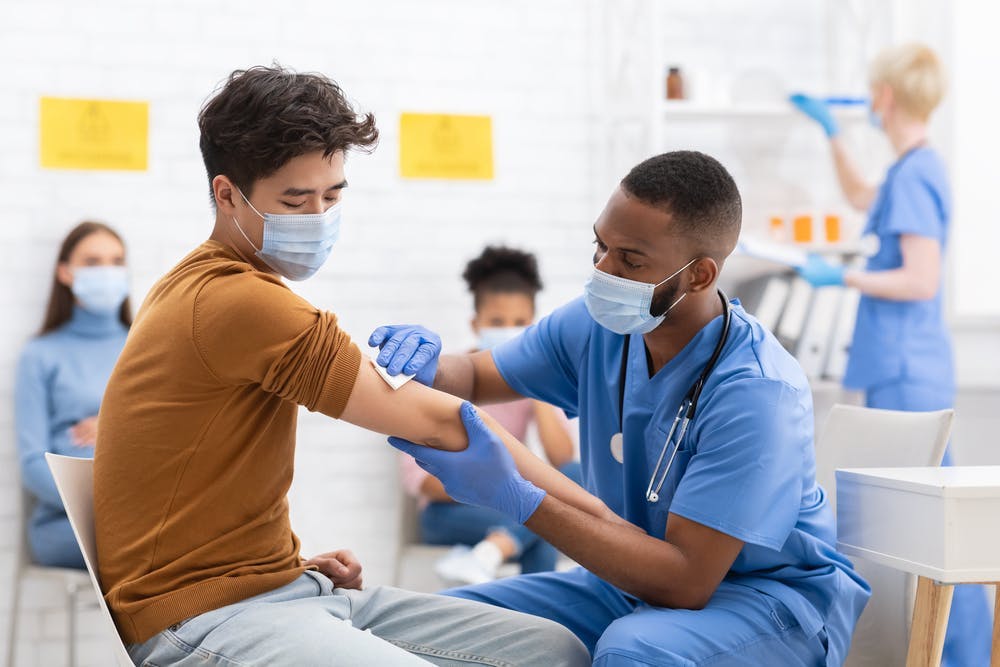Shingles facts: What you need to know
Shingles is a viral infection, also known as herpes zoster, that causes a painful skin rash. According to the Centers for Disease Control and Prevention (CDC), it affects more than one million Americans every year.
This common infection is caused by the varicella-zoster virus (VZV), which also causes chickenpox. When you get chickenpox, the virus stays in your body. The virus can reactivate later in life and cause shingles.
Since this virus can impact one in three people in their lifetime, here are six facts about shingles that you may not know:
1) Shingles is caused by the same virus that causes chickenpox.
Chickenpox and shingles are caused by the varicella-zoster virus. The initial infection presents as chickenpox, typically in childhood, with small blisters (called vesicles) that appear all over the body.
When chickenpox resolves, VZV goes dormant but remains in the body. Later, VZV reactivates as shingles, causing vesicles that only appear on one side of the body along one nerve pathway(called a dermatome). This causes painful blisters to develop on one side of the body or face. Sometimes, the rash can be more widespread, similar to chickenpox.
The blisters typically scab over within seven to ten days and clear up within two to four weeks. Most people only have shingles once in their life, but it can happen more than once.
2) Several risk factors increase your risk of shingles.
While anyone who’s had chickenpox could get shingles, several risk factors make the virus more likely to reactivate. The biggest risk factor for shingles is age. Patients who are age 50 and up have a much higher incidence of shingles than their younger counterparts. Patients who have HIV, autoimmune disorders, or an underactive immune system are also more likely to contract shingles.
3) There are several signs and symptoms of shingles to look for.
Painful blisters on one side of the body or face are the primary symptoms of shingles. It usually starts as a burning sensation along the affected dermatome or area of the skin that is connected to a single spinal nerve.
Often, the pain becomes a deeper nerve pain once the rash appears. The rash begins as small red bumps that develop into vesicles and take up to two weeks to disappear.
Less than 20% of patients with shingles will also experience systemic symptoms, including fever, body aches, upset stomach, and malaise.
4) There are multiple ways to diagnose shingles.
If you believe you have shingles, you should seek care as soon as possible, ideally within three days of symptoms appearing. Immediate treatment can help prevent long-term complications.
When you visit our urgent care for shingles, a healthcare provider can diagnose shingles based on your symptoms and exam findings. However, if the diagnosis is unclear, a viral culture can be obtained to confirm the presence of VZV.
5) Shingles is treatable.
Antiviral medications are the first-line treatment for shingles. These medications shorten the course of the infection and decrease the likelihood of a patient developing postherpetic neuralgia, which happens when the rash resolves but the nerve pain persists. Antiviral medications are most effective when started within 72 hours of the onset of shingles.
Over-the-counter or prescription pain relief medications can also be used. At-home treatments such as warm compresses or oatmeal baths can help relieve the discomfort from the rash.
6) Shingles can be prevented with a vaccine.
The first shingles vaccine was Zostavax, which was approved for use in 2006. In 2017, the Shingrix vaccine became available and is now the preferred vaccine for preventing shingles. It’s recommended that adults ages 50 years and up receive two doses of the Shingrix vaccine, which lowers the rates of shingles and postherpetic neuralgia by 90%.
Our providers are here to help
If you have learned these six facts about shingles and suspect you might have this common viral infection, you need to get treatment as soon as possible. Can urgent care diagnose shingles? Absolutely! When you visit one of our urgent cares for shingles, you can get the immediate attention you need for this painful condition.
Our urgent care providers can diagnose shingles, offer the appropriate treatment, and make referrals to specialists if needed. We are open 365 days a year with extended hours, so you do not have to wait to start feeling better.
Find a center near you and walk in or save your spot online to get started. While we recommend in-person visits for a shingles diagnosis, we also offer Virtual Visits.
Sources:
- https://www.cdc.gov/shingles/index.html
- https://www.cdc.gov/shingles/about/transmission.html
- https://www.ncbi.nlm.nih.gov/pmc/articles/PMC4754002/
- https://www.aad.org/public/diseases/a-z/shingles-causes
- https://www.cdc.gov/shingles/about/symptoms.html
- https://www.aad.org/public/diseases/a-z/shingles-treatment
- https://www.cdc.gov/shingles/about/treatment.html
- https://www.cdc.gov/vaccines/vpd/shingles/public/shingrix/index.html
Written By Sarah The barge, Physician Assistant on March 26th, 2024


